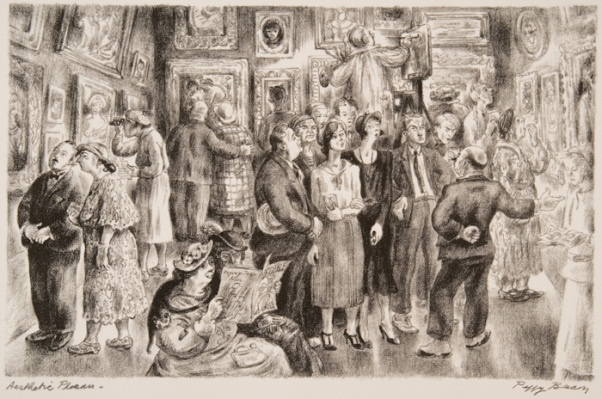Metropolitan Life
At the turn of the twentieth century, artists in cities such as New York and Philadelphia found inspiration in the urban centers themselves. City life, especially in New York, was foundational to the emergence of the Ashcan School, a loose group of artists including Robert Henri and John Sloan (1979.15), and later George Bellows (1979.13) and Edward Hopper (2004.09), who recorded scenes of daily life with uncompromising verisimilitude. Many artists working in the city had studied abroad in Europe and had also most likely witnessed in New York the International Exhibition of Modern Art of 1913, later known as the Armory Show, the first large-scale exhibition of early modernism in the United States. The exhibition featured approximately thirteen hundred artworks, a third of which were European that the American public and press vehemently rejected. However, the experimental, abstract styles of the European avant-garde had a profound impact on artists like Charles Sheeler and Louis Lozowick (1982.08), who used contrasting sizes and geometry to evoke the epic scale of America’s industry and modern cities.

